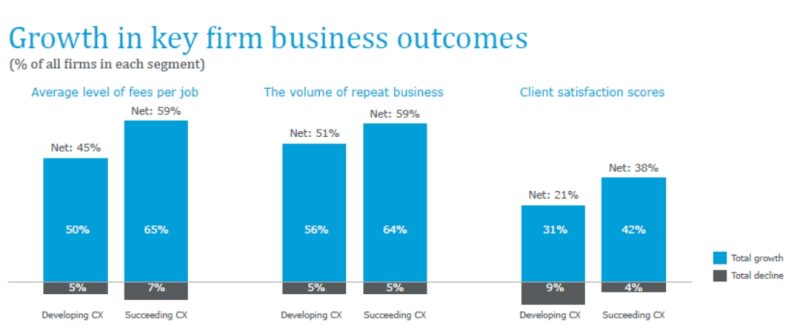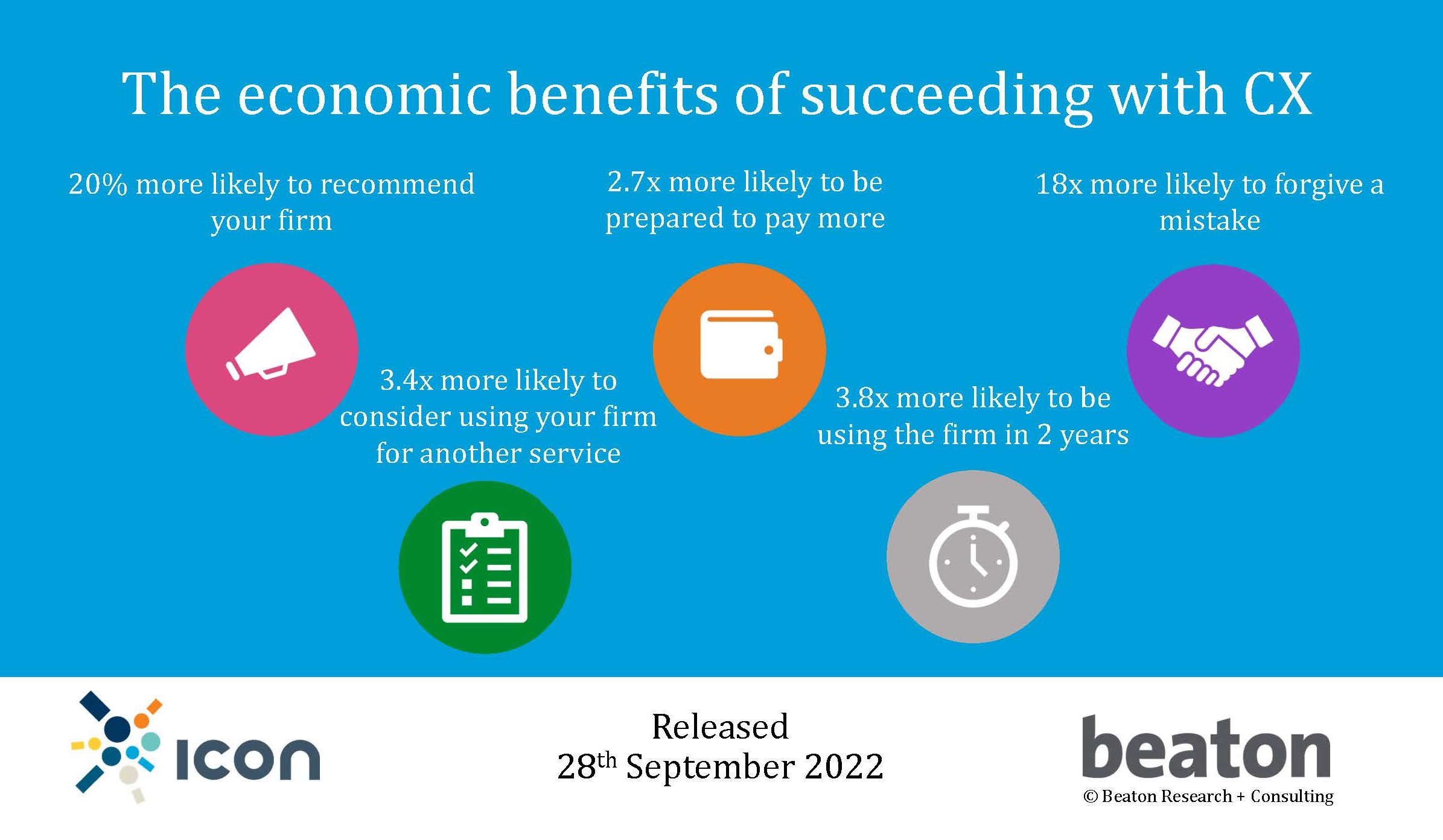Client experience – or CX – is not only the hottest acronym in professional services right now. It could also be the “single most powerful and sustainable market differentiator for your firm”.
This relatively new concept is quickly becoming a crucial factor for firms competing for new and returning clients. So, what is CX and why should you care? Here’s what you need to know.
A shallow dive into the history of CX
The customer experience has long been studied in business-to-consumer (B2C) sectors. Until recently, however, the experiences of clients in the professions (consulting and accounting, legal, architecture, etc) have been less widely acknowledged and researched. It’s useful to understand customer experience because it has many parallels to client experience.
Clients are customers of a service-based product that can be marketed in similar ways to retail consumer goods. Business-to-business (B2B) firms value the impact that happy, returning clients have on cashflow and growth – in the same way B2C businesses value these things from customers.
However, the client experience has distinct differences from “customer journey” language used in B2C settings use. A “journey” implies a discrete beginning and end – for example, a customer browsing a website with the end destination of making a purchase at checkout. In comparison, the B2B professional services sector CX builds on relationships nurtured and grown over time, more like a never-ending cycle.
The other term many people know is user experience (UX). This most often applies to technology and web-based products that hinge on a user directing their own experience (clicking through a browser, operating a smart phone). The UX is how a person feels when interfacing with the system.
Like CX, UX is a never-ending cycle with many factors impacting it.
Unlike CX, the relationship between seller and purchaser in the UX context is more one-sided. The client or user in UX is mostly in the driver’s seat; whereas CX requires a two-way flow of communication between a client and practitioner.
The customer experience journey has long been studied and mapped in business-to-consumer (B2C) sectors. Until recently, the experience of clients in the professions has been less widely acknowledged and researched.
What’s the definition of CX?
Beaton has measured and analysed client satisfaction data for 20 years via large-scale annual surveys called Beaton Benchmarks. We also conducted a landmark study into the State of Client Experience in Professional Services 2022, which is available for free download here.
Based on this deep reservoir of knowledge, Beaton defines CX as:
Client experience is the net value of clients’ perceptions and feelings resulting from all interactions with a firm’s brand, people, products, and services.
It’s important to note client experience is distinct from client service. As Garth Brown, Principal of Brown & Brown Conveyancers explains:
“Client service is one touch point, whereas client experience is the whole sum of a clients’ interaction with your office during a matter.”
Garth Brown, Brown & Brown Conveyancers
One marketing manager from an accounting firm who wished to remain anonymous in a Beaton survey put it this way:
“CX encompasses … every interaction with the brand – from top of the funnel acquisition channels, through to conversion channels … or processes that a client is exposed to across finance, marketing, IT. Each and every division is an important piece of the CX puzzle.”
Gaurav Rajadhyax, Architect and Director of architecture firm R Architecture, gave us this fully rounded summary:
“Client experience is a complete package. In the design and construction industry, it includes the full journey – from initiating a project all the way through to seeing it built and realised. It’s a process which brings together various levels of experience from a range of professionals and stakeholders. CX is about how the clients perceive this journey and how confident they feel throughout that process. Customer service is a component of this package, it is not the entire package.”
Why does CX matter?
Data from our research shows CX is an essential ingredient for firms to thrive in the hyper-competitive space of professional services consulting. We see it more each year: clients are becoming more selective and informed, continually demanding more value, and becoming more willing to “shop around” for the best service from external service providers
Firms focused on investing in and improving their CX enjoy crucial advantages over other firms in this environment. They tend to have:
- Happier clients
- More engaged employees
- Faster growth
- Average higher fees per job
- More repeat business
The infographics below are based on Beaton Benchmarks surveys as well as the State of Client Experience in Professional Services 2022 report. They showcase just how important CX is for professional services firms.






The bottom line is CX will have a huge impact determining your firm’s bottom line in years to come.
Professional services practitioners need to do more than simply understand the acronym. Equip your firm with pioneering insights into the state of client experience by downloading our landmark report.
Find out how Beaton can further inform and enhance your firm’s CX with our services here. Or, contact us to discuss your options with a Beaton partner.
Share these insights with a colleague
The corresponding post type is disabled. Please make sure to 1) install The7 Elements plugin under The7 > Plugins and 2) enable desired post types under The7 > My The7, in the Settings section.




